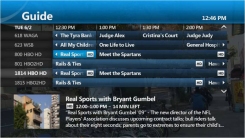There are 7.125 billion people in world, yet sport organizations are finding their biggest challenge is happening off the field. It’s attracting, engaging, and retaining elusive fans.
The National Football League, the National Basketball Association, the National Hockey League, and every other governing body are looking for new ways to attract and engage spectators.
 The two biggest issues: time and money.
The two biggest issues: time and money.
Americans only have an average of five hours a day for leisure, according to an American Time Use Survey published last year. If someone wanted to attend a sporting event, they have to take the time to contemplate going, buy their tickets, drive to the stadium, find parking, watch the game, wait in traffic to get out of the stadium, and then drive home. More than likely, they’ve already used more than their five hours at the end of the trip.
Folks don’t have to go to a game to have a good time. There are so many other activities that come to mind: watching a movie (either at home or the theater), going to a concert, going shopping, going hiking, or even catching up on sleep.
Can you tell we live in a competitive environment? Let’s pretend no other leisure activities exist besides sports. There are still so many options to choose from on a Saturday: 20 college football games airing on TV, tennis and golf tournaments, racing, six soccer matches, high school events, and at least five other competitions.
many options to choose from on a Saturday: 20 college football games airing on TV, tennis and golf tournaments, racing, six soccer matches, high school events, and at least five other competitions.
Technology has changed how individuals consume sports. They no longer have to sit in a stadium, at a bar, or at home to watch a match up. A guy can be out with his wife and daughter at the mall and watch the game on his smartphone. There is even an option to get live updates through apps.
People know their time is valuable. That’s probably why so many of us don’t bother going to games or even watching them on TV. We just want to see the highlights — show the top three plays and the score and we’ve seen the whole game. Everyone at work is only going to be talking about the big moves, right?
 Fans’ expectations are so much higher than they’ve ever been. No one wants to sit in the rain, the cold, or the heat. No one wants to sit on an uncomfortable bleacher that doesn’t have armrests or back support. No one wants to eat just popcorn and hot dogs — they want sushi and vodka.
Fans’ expectations are so much higher than they’ve ever been. No one wants to sit in the rain, the cold, or the heat. No one wants to sit on an uncomfortable bleacher that doesn’t have armrests or back support. No one wants to eat just popcorn and hot dogs — they want sushi and vodka.
We haven’t even talked about the money! When one considers going to a game, they have to be willing to take on an investment. They will need to pay for gas to get there/get home, parking, the actual tickets, food and drinks, and probably some team merchandise. A lot of people gripe about the cost of seeing a movie being sky-high, but it’s a bargain when compared to going to a game!
Some other characteristics that define the elusive fan consist of commercialism, individualism, and changes in family structure and behavior.
It’s hard for sport organizations to understand what channels people are using, and it’s even harder to construct the right message. Generations Y and Z are perhaps the most elusive. If organizations think they have a problem now, the people born ten years from now with be even more elusive.
Generations Y and Z are perhaps the most elusive. If organizations think they have a problem now, the people born ten years from now with be even more elusive.
These brands really need to focus on what people want, when they want it, and where they want it. Organizations have to tell folks why they need to go to/watch sporting events. What’s in it for me? They need to look for innovative ways to create exclusive experiences. Overall, brands must be strong, communicate with fans, and know what’s expected in order to be successful.
